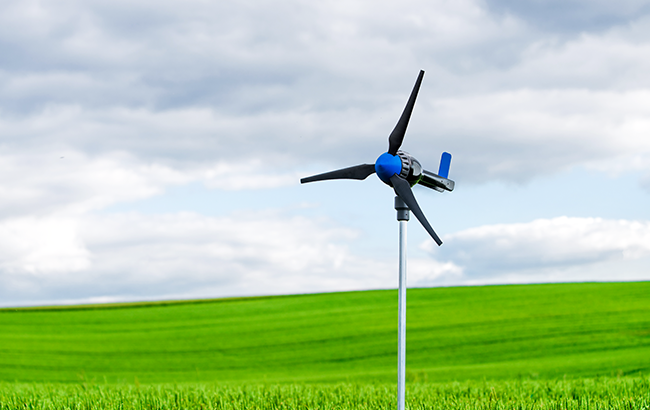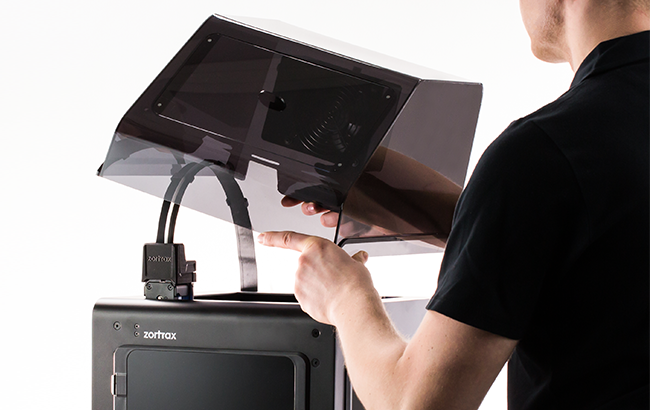How to Stay Green When You Are 3D Printing
Summary
- Managing the use of support materials and recycling used thermoplastics can make your production line much more eco-friendly.
- Using the filaments that are water soluble or biodegradable minimizes the negative environmental footprint of additive manufacturing.
- Creating an enclosed 3D printing environment is important to keep ultra fine particles from getting airborne.
In light of rising climate change debates, the environmental impact is an increasingly important factor for individuals and companies alike. As we search to find new eco-friendly solutions to lives, we also look at manufacturing and how we can create in a manner that is not harmful to the surrounding environment. Based on few studies done on the environmental impact of this relatively young technology, we learn that while it is not entirely green it serves as a decent substitute to other manufacturing technologies. Especially when used in a reasonable and conscious manner so if you’re a fan of 3D printing and you want it to be more “green”, there are a couple of strategies you might consider.
What to watch out for
Some of the issues you might encounter when 3D printing is managing waste and energy. When compared to other manufacturing technologies, like CNC, which start with blocks of material and it cuts most of it away, 3D printing produces small amounts of waste by creating an object layer by layer. Facts 3D printing creates a lot of waste in the form of discarded support material. Cooling fans, a heated build plate and internal electronics require lots of energy. 3D printing emits ultra fine particles and can create an unpleasant smell. However, some models do require the addition of support structures, which typically ends up being discarded once the production is finished. If you do not use support you risk failed prints which ultimately might also find their place at the dumpster. In terms of energy, most high-end 3D printers require a lot of electricity to run. Their main components, such as cooling fans, the hot end, a heated build platform and internal electronics make up the bulk of used power.
 Also, 3D printing emits varying quantities of ultra fine particles (UFP). Peak emissions for 3D printing with ABS-based materials consist of particles in the 14 nm to 49 nm size range. Printing with PLA results in emitting slightly less, slightly larger particles, however those still qualify as nanoscale objects with sizes below 100 nm. What’s more, additive manufacturing with ABS creates fumes and odors that are unpleasant in a working and office environment, especially in poorly ventilated areas.
Also, 3D printing emits varying quantities of ultra fine particles (UFP). Peak emissions for 3D printing with ABS-based materials consist of particles in the 14 nm to 49 nm size range. Printing with PLA results in emitting slightly less, slightly larger particles, however those still qualify as nanoscale objects with sizes below 100 nm. What’s more, additive manufacturing with ABS creates fumes and odors that are unpleasant in a working and office environment, especially in poorly ventilated areas.
What you can do
When combating waste the most important thing you can do is to try and use biodegradable, compostable or dissolvable materials. Thankfully, the often discarded support structures can be easily dissolved in water, when you have the right dual extrusion 3D printer, a dedicated station that will get rid off the liquified waste and you’re using the right filament. Facts To combat waste, you can use water soluble support structures. Using biodegradable thermoplastics and filament recyclers will reduce the environmental impact of 3D printing. A HEPA Cover stops 99% of nanoparticles and a carbon filter with get rid off unwanted odors. PVA support filament works with a variety of materials, including the most popular ABS and PLA, while HIPS can dissolve in Limonene solution and is a great substitute for support structures that won’t end up being completely wasted. If neither of those is an option for you, you can always limit the use of support structures to a bare minimum, focusing your use of supports mostly on complex 3D models. Simple prints shouldn’t require supports to achieve respectable results.
 When it comes to using the right filament for your models there are certain properties you might want to consider when going green. Some plastics are biodegradable, meaning they will break down naturally and are digestible by microorganisms. PLA is very well-known for being created from organic material such as cornstarch and sugarcane. It is a renewable plastic, making it a likely choice for plastic bags, cups and plates because it is non-toxic. Although, those who want to “save the planet” needn’t be so fast in making their decision since with proper equipment ABS can also be recycled, if you want to re-heat the material to use it again in a filament recycler, which is something that a lot of 3D printer users seem to agree is the most ecological way to go, even with biodegradable materials. Since ABS is a “thermoplastic”, it allows you to re-heat multiple times after it has already been used and heated before. Various filament recyclers can grind up household waste made of plastic and failed prints and turn them into filament, making you a more eco friendly user.
When it comes to using the right filament for your models there are certain properties you might want to consider when going green. Some plastics are biodegradable, meaning they will break down naturally and are digestible by microorganisms. PLA is very well-known for being created from organic material such as cornstarch and sugarcane. It is a renewable plastic, making it a likely choice for plastic bags, cups and plates because it is non-toxic. Although, those who want to “save the planet” needn’t be so fast in making their decision since with proper equipment ABS can also be recycled, if you want to re-heat the material to use it again in a filament recycler, which is something that a lot of 3D printer users seem to agree is the most ecological way to go, even with biodegradable materials. Since ABS is a “thermoplastic”, it allows you to re-heat multiple times after it has already been used and heated before. Various filament recyclers can grind up household waste made of plastic and failed prints and turn them into filament, making you a more eco friendly user.
As for eliminating nanoparticles and unwanted smell from your workspace you can buy or build an enclosure that would keep the fumes from your 3d printer from being emitted into the air. Modern 3D printers can combat all emissions since they come with a seperate air-filtration system or a HEPA filter. Such filters have been experimentally proven to be over 99% effective in catching ultra fine particles, whereas a carbon filter can improve get rid off the unpleasant odor when 3D printing with ABS-type filaments. But if you are working with a 3D printing machine that works without such filters you might look into building a makeshift one on your own.
 Energy consumption is one aspect that is tough to get around, as running a 3D printer will always require electrical power to be constantly feeded to it. However, if you 3D print in house, and your completely self-sufficient on energy provision due to renewable energy resources, like wind turbines or solar panels, you will drastically lower your footprint on the environment. What’s more, running a 3D printing farm will always require less toxic energy than operating a large industrial furnace.
Energy consumption is one aspect that is tough to get around, as running a 3D printer will always require electrical power to be constantly feeded to it. However, if you 3D print in house, and your completely self-sufficient on energy provision due to renewable energy resources, like wind turbines or solar panels, you will drastically lower your footprint on the environment. What’s more, running a 3D printing farm will always require less toxic energy than operating a large industrial furnace.
Conclusion
Overall the potential and eco-friendly results of 3D printing technology is there and can be improved by making the right steps, as well as going for the right, environmentally friendly devices and filaments. This technology is believed to be a revolution in manufacturing for a reason and is expected to get bigger and greener thanks to further scientific studies and technological developments.